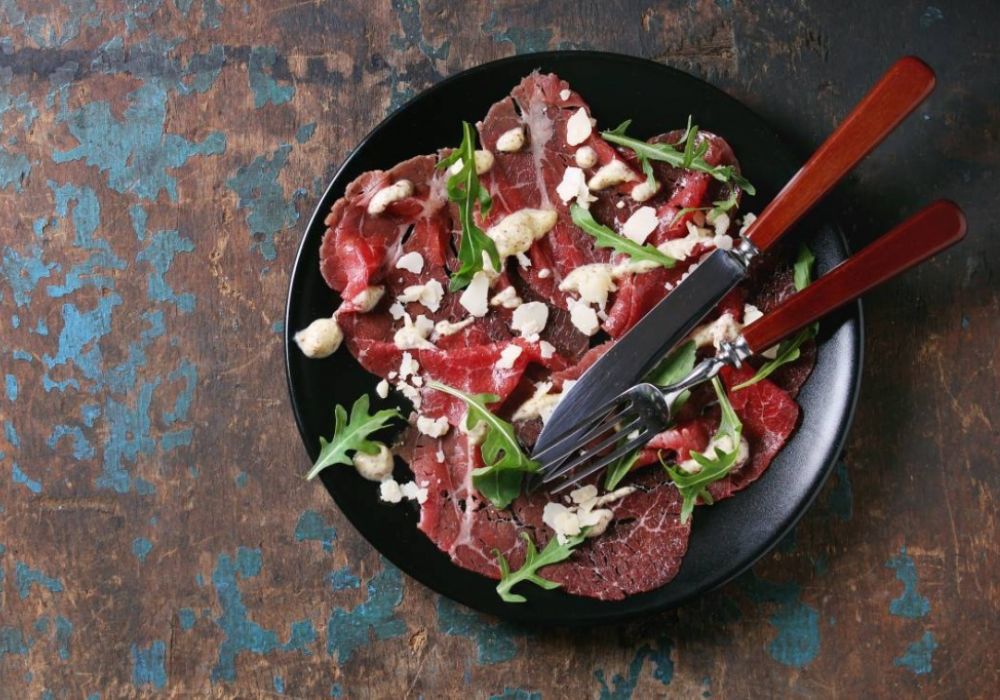
Is it safe to eat raw meat?
In recent years, around the world, eating raw fish and seafood has become a common practice. Japanese restaurants serving sushi and sashimi, Peruvian serving ceviche, French serving tartare, and Italian with carpaccio as their specialty.
But fish is not the only protein consumed raw. Eating raw meat or meat that has undergone minimal heat treatment (rare) is a common practice in many cuisines around the world. However, even though this practice is quite common, there are safety issues that one must take into account.
RISK OF FOOD POISONING
The most common pathogens in raw meat include Salmonella, E. Coli, Campylobacter, Listeria monocytogenes, and Clostridium. Through cooking, these pathogens are destroyed, so there is no risk for symptoms, such as nausea, vomiting, diarrhea, abdominal pain, fever, and headache, which are caused by food poisoning.
These symptoms usually appear within 24 hours of eating and can last up to seven days, or even longer in some cases – duration depends on the pathogen.
Therefore, it is obvious that consumption of raw or undercooked meat poses risks to our health and must be done with caution. Certain groups, such as children, pregnant women, nursing mothers, the elderly, should avoid eating raw meat altogether.
WHAT TYPES OF MEAT ARE EATEN RAW?
There are several “rules” that define raw meat consumption. Such a common rule says that beef and lamb meat can be consumed raw or lightly cooked, while pork and chicken must be well cooked for safe consumption.
In reality, all these kinds of meats pose risks if consumed raw. Chicken and pork meat pose even greater risks, and as they taste incomparably better when cooked than undercooked, the risk is not worth it. On the contrary one should avoid eating raw or undercooked chicken or pork meat.
While beef and lamp pose less risk in comparison to chicken and pork meat, and may taste better if they retain a pink color inside, the fact remains: that they also pose risks when eater raw.
POPULAR DISHES WITH RAW MEAT
Some very popular dishes from all over the world, which are based on raw or undercooked meat are:
Carpaccio: carpaccio is a meat or fish appetizer (beef, venison, horse, salmon, tuna, etc.) cut into extremely thin slices and tenderized to be smooth and almost transparent.
Steak tartare: is a dish made from finely chopped fresh raw meat (beef or horse) and served with herbs, pepper, egg yolk, capers, Worcestershire Sauce and chopped onion.
Pittsburgh rare steak: is a dish where the meat is shielded on the outside, remaining raw on the inside. In Greece and Europe, it is better known as a type of beef roast, known as bleu.
Mett: is a traditional German dish based on pork. The meat is served chopped, usually seasoned with salt, pepper, garlic and cumin.
Torisashi: is a Japanese dish based on chicken. The meat is cut into very thin strips and is slightly pan-fried, only to be shielded on the outside, while on the inside it remains raw.
IS RAW MEAT MORE BENEFICIAL THAN COOKED MEAT?
It has sometimes been argued that raw meat is more beneficial, as the process of cooking is considered to destroy certain vitamins and minerals. However, there is no sufficient scientific evidence to support this.
Many anthropologists argue that it was exactly the practice of cooking the food which allowed the human species to evolve so dramatically and so quickly, as cooking breaks down proteins and facilitates chewing and digestion.
Indeed, some studies show that cooking meat reduces its content of certain vitamins and minerals, such as thiamine, riboflavin, niacin, sodium, potassium, calcium, magnesium and phosphorus. But the same studies show that cooking increases the meat’s content of other minerals, such as copper, zinc and iron.
HOW TO AVOID THE RISK OF FOOD POISONING
We need to understand that when eating raw meat there is no safety guarantee. However, there are some tips that, if followed, will reduce the risk of food poisoning.
It goes without saying, of course, but it’s worth repeating it: the meat to be consumed should be fresh and handled as provided by the relevant hygiene and safety rules.
Also, it would be a wiser choice if we chose to eat a whole piece of meat (fillet, steak, frame) or chopped meat that we have cut at home, and avoid packaged minced meat.
Avoid eating chicken that has not been cooked well, as pathogens that may be present in the chicken are more harmful than those found in other animals. In addition, pathogens such as salmonella can enter the inside of chicken meat due to its enlarged pores.
Of course, the best option is to cook our meat – or at least (when the kind of meat allows it) shield it from the outside. Usually, the pathogens that may be present in beef or lamb are on the outside of the meat and do not pass inside. Therefore, if we cook (shield) the meat that we will consume from all sides externally, then we will have significantly reduced the risk of some food poisoning.
In any case, we must be very careful when it comes to the quality and freshness of the meat we source, as well as the conditions of handling, distribution and storage at all stages of production so that we can enjoy our favorite dishes without health risks.



